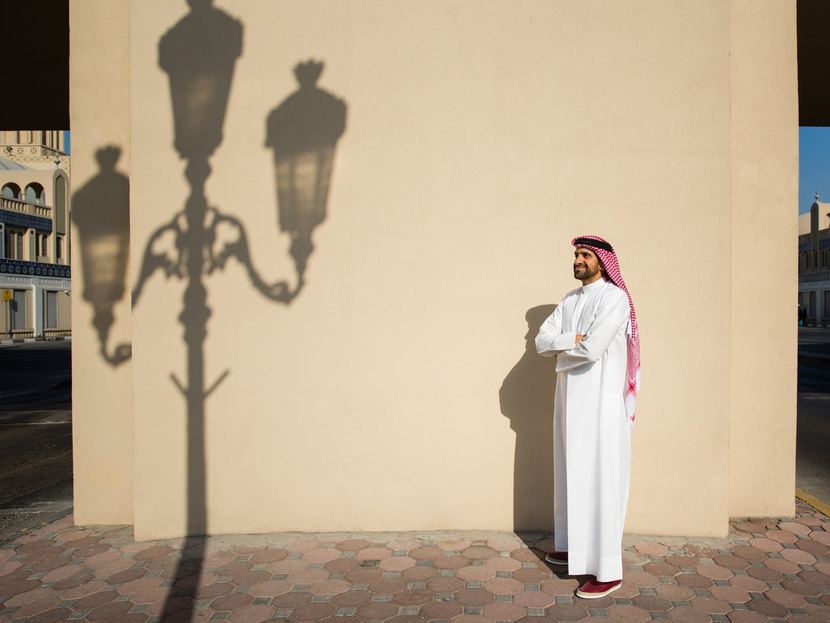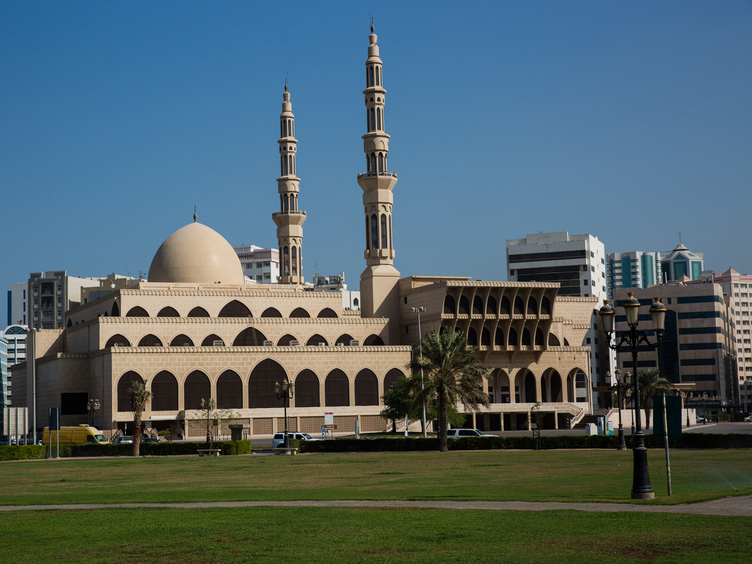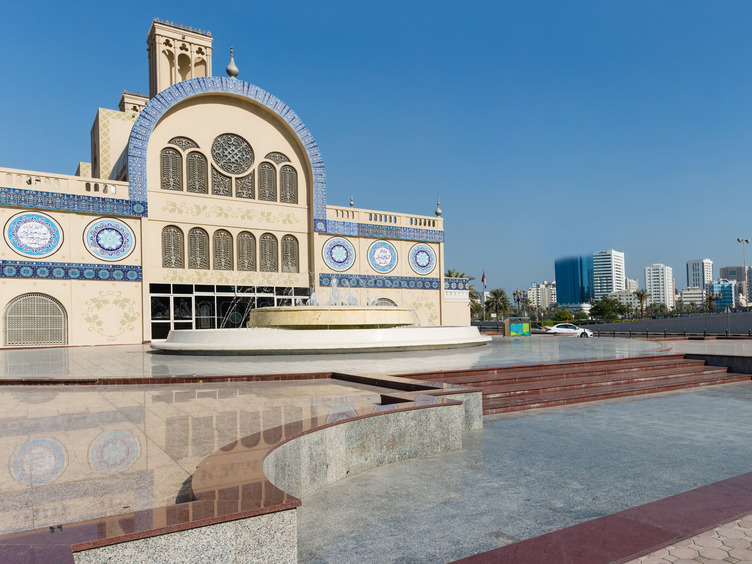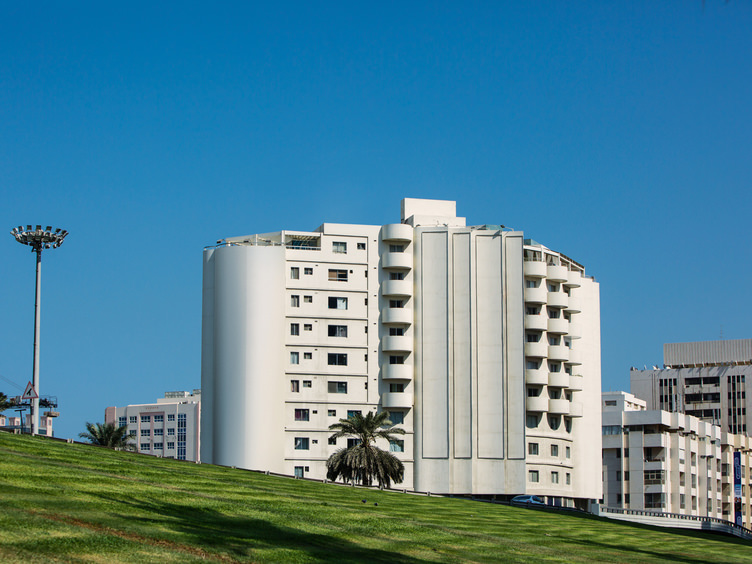AUTHOR: RANIA HABIB
Sultan Al Qassemi is on a quest to bring the modern architectural gems of his native Sharjah the recognition they deserve.

Sultan Al Qassemi wears many hats: founder of the Barjeel Art Foundation, art collector, political commentator, trustee of the Museum of Contemporary Art in Chicago and prolific writer and newspaper columnist are but a few.
The passionate Sharjah native has recently taken on another endeavour: documenting the modern architecture of his home town. “In the Middle East, we refer to buildings by the names of their owners or by the corner shop underneath, while the architect remains relatively unknown,” he says.
“This is in contrast to places like the USA, where we refer to the Gehry Theatre or the Skidmore Towers, for example. I want to give credit to the architects.”
During the 1950s, 60s and 70s, architects from all over the world came to Sharjah to leave their mark. From Spain to Syria, India to Palestine and Lebanon to the UK, they arrived in the coastal city and designed some now-iconic landmarks, such as the Marbella Resort, the King Faisal Mosque and the Blue Souk, as well as some lesser-known designs such as the ‘Bottle Building’.
Research for the venture has consumed Al Qassemi, who says he and his team have gathered information on nearly 250 buildings to date. When it hits 300, the list will be whittled down to around 60 projects, which in turn will be compiled into a book about the modern architecture of Sharjah, slated for publication in 2020.
Al Qassemi, who manages the @architectureofsharjah Instagram account and ‘can’t stand glass buildings’, is leading a movement to preserve some of Sharjah’s modernist architectural heritage in the face of increasing demolitions.
“Even if I am unable to stop that, I would like to at least retain the memory of these buildings that we grew up with, which informed our personalities and ethics,” he explains. “Though it sometimes feels like I am looking for things that no longer exist, I believe there is bound to be a meeting point between the buildings with unknown architects, and the architects whom I know have designed structures in Sharjah but whose buildings I am unable to find.”
Here he reveals the stories behind three of his favourite Sharjah architectural landmarks.

“The architect is Abdul-Rahman Abdul-Hafeedh Al Junaidi, a Saudi gentleman who was born in Mecca in 1938. The mosque took two years to build and was opened to the public in January 1987. This is such a unique building because it is not a copy of other mosque designs that we seem to cherish these days – namely, the ornate Ottoman or Andalusian styles.
Al Junaidi is a big fan of cantilevers and this is showcased in the building. Everything from the protruding arches to the minimalist style is so stunning, and its simplicity is what distinguishes it from others. I asked the architect why there were no patterns and he was almost offended by the question: for him, patterns distract from spirituality and so he made the interiors simple, with wood and plain carpets. It’s gorgeous to be inside.”

“Designed by Michael Lyle and Partners, this is probably one of the boldest architectural statements to emerge from the first two decades after the formation of the UAE. It’s such a beautiful building, which draws inspiration from some of the UAE’s architectural motifs, including the barjeel [or wind tower].
The architect Edward Mansfield from Halcrow International Partnership tried to replicate the design with the Souq Al Majarrah building, which is now the Sharjah Museum of Islamic Civilisation. The Blue Souk, which has appeared on the UAE’s five dirham bank note since the 1980s, is where I bought all my clothes as a child, and to this day I still shop there. There is nothing else like this building architecturally in Sharjah – it’s an icon.”

“I think this is the greatest modern building in Sharjah. It’s only about nine storeys high but it’s so beautiful. The protruding balconies, the circular shape, the location, the simplicity – it all reminds me of concrete brutalism to a certain degree. The architect, Anas Wassouf, was unknown.
I didn’t even know if he was still alive when I came upon his name, but he is, and he designed this building in 1976. The SNTTA Building, known by the name of the travel agency it houses, is adjacent to my father’s office, so I would see it every time I visited as a child.”
This article was originally published in Architectural Digest on December 4, 2016. A screenshot of this article can be downloaded here.